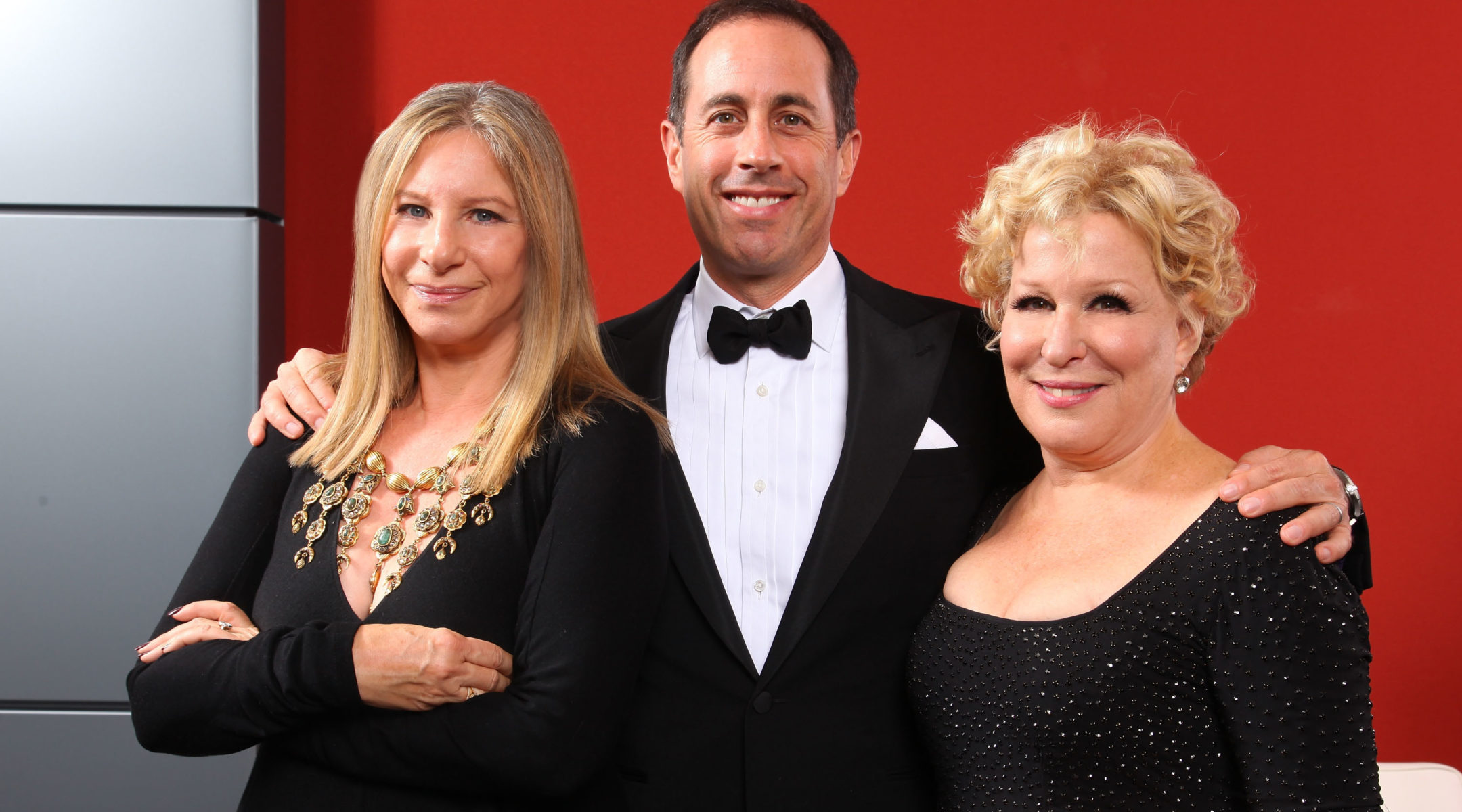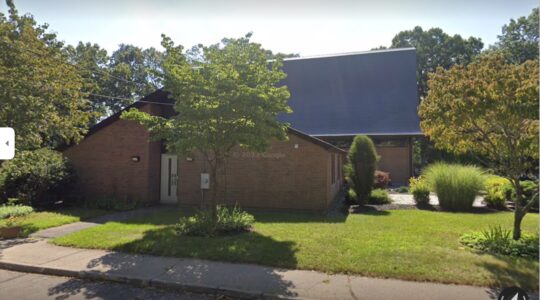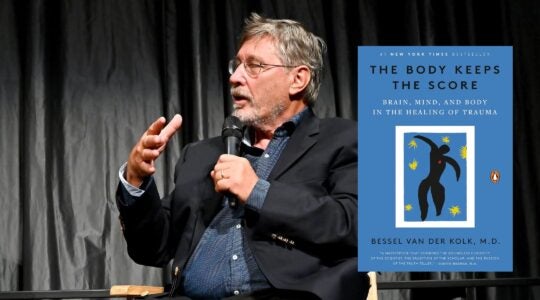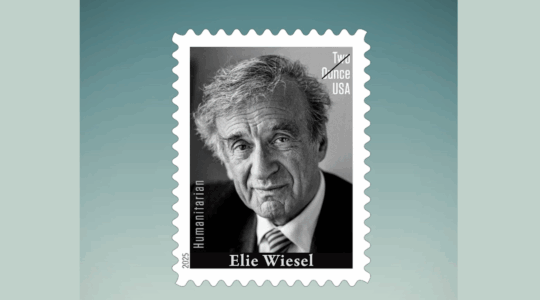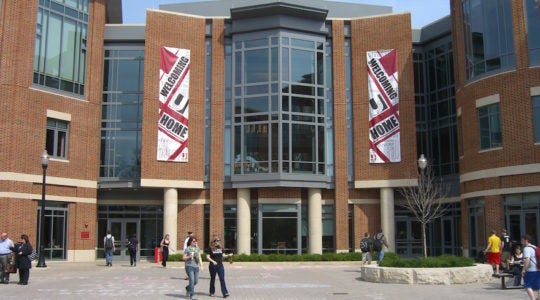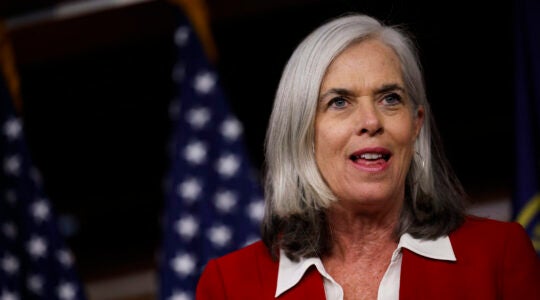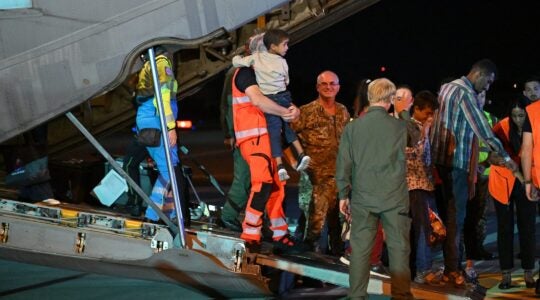PHILADELPHIA (Jewish Exponent) — Her granddaughter at her elbow, 89-year-old Ruth Sarner-Libros walked slowly through the fourth floor of the National Museum of American Jewish History, drinking in every display.
Flashing a broad smile, Sarner-Libros said it was beyond anything she had imagined when she hosted the museum’s first board meeting back in 1974. It took two years to open the modest collection in a small space adjoining the historic Congregation Mikveh Israel in the Old City section of downtown Philadelphia.
Now, after a decade-long, $150 million campaign, those artifacts have been elevated to a sparkling new 100,000-square-foot home less than a block away in the heart of the city’s Independence Mall.
“It’s such a significant location, the exhibits are so impressive, the whole way it’s put together, it’s just an overwhelming experience to see a dream come true,” said Sarner-Libros, the board president emerita, “to have a child of my imagination become a reality.”
In honor of the accomplishment, hundreds of people, many of them donors, joined Sarner-Libros in a weekend of celebration headlined by Vice President Joe Biden, comedian Jerry Seinfeld and entertainer Bette Midler.
Founding members jump-started the festivities on Friday morning with discussions of the museum’s architecture and how freedoms of the Jewish people have changed throughout American history.
The next night, about 1,000 local and national supporters, stars and dignitaries gathered for a gala in a mammoth tent that spanned the block of Fifth Street just outside the building.
Despite the steep admission — individual tickets cost from $1,500 to $5,000 — the museum couldn’t accommodate about 200 would-be revelers.
Seinfeld emceed the swanky kosher dinner. The crowd ate up his Jewish-tailored shtick as he joked about everything from his mother who couldn’t figure out a cell phone to the undignified nature of bathroom stalls.
As Midler took the stage, she jokingly wondered why the museum was located in Philadelphia rather than New York, where she quipped that “there are more Jews in my building than in this town.”
Her performance, characteristically peppered with humor and profanity, was clearly tailored to the theme of the night. She sang only songs written by Jewish artists, beginning with her signature “Friends” and ending with Irving Berlin’s “God Bless America.”
Barbra Streisand created a buzz as an attendee, but she neither spoke nor sang. Instead, she sat front and center with her husband, James Brolin, with security guards nearby to keep away fans.
One of 18 individuals highlighted in the museum’s Only in America Gallery/Hall of Fame, which greets visitors on the first floor, Streisand made time to stop in the museum’s shop, where she spent $800 on three yads (Torah pointers) and silver candlesticks.
Meanwhile, in the museum’s designated event space on the fifth floor, roughly 850 “young friends” bobbed along to a cover band on a chic white dance floor. Color-changing lights reflected on white fabric draped around the room.
“The amount of energy you feel here right now is incredible,” said Lindsey Morgan, 35, a mother of two who also helps her husband with his real estate lending company. “It’s like an unspoken thing how this evening means so much to our heritage. This is one of the most exciting things to happen to the city ever.”
The next day, a chorus of about 50 shofar blowers heralded the start of the official dedication ceremony. Nearly 2,000 people gathered on the mall in front of the museum, basking in the unseasonably warm Sunday afternoon.
Biden echoed that sentiment, saying that although the museum focuses on the Jewish people, “they’re American stories above all else. I can think of no other city that would be a fitting showcase for them.”
Other speakers included George Ross, co-chair of the board of trustees and chairman of the capital campaign; Pennsylvania’s outgoing governor, Ed Rendell, and Philadelphia Mayor Michael Nutter.
Following the ceremony, the museum opened to members of the public who had reserved free timed tickets. Donors and supporters streamed into the halls, dragging confetti from the damp lawn on their shoes. Some came from as far as Cleveland and Seattle to see material they had provided for the exhibits.
Others, like Anitta Boyko Fox, made the nearly two-hour trip from North Jersey to see their familiar immigrant stories reflected in the exhibits.
“It really hit home because I came here when I was 13, and all these years you don’t have time to think, and all of a sudden you get to be 86,” Fox said, chuckling softly.
Inspired by the collection, Fox took advantage of the storytelling studio at the museum, where guests can record their histories for its archives. She spoke about growing up in Vienna and how an empathetic superintendent saved her family by warning them to hide in the dark when the Nazis first overran the city.
“All night long we heard the screaming and the crying, and the next day all the Jews were gone,” Fox said, her voice trembling. “Our door was the only one that wasn’t marked with a J.”
Bronya Vygodskaya, a law firm administrator from Brooklyn, also knows what it feels like to experience anti-Semitism. In Russia, she was fired from her job teaching English in college “because I was a Jew. They officially told me that.”
Experiencing hatred for being Jewish, she said, makes it even more important to preserve that identity. That’s why the new museum means so much, she explained.
“This woman,” she said, gesturing at a photograph of an immigrant, “looks like my grandmother, you know?”
At every corner, docents called to visitors to make sure they didn’t miss a particularly interesting artifact — a telegram about the planned annihilation of the Jews during World War II or passports from immigrants who came through Ellis Island. Mixed in the maze of information were laminated sheets of Hebrew and Yiddish newspapers to pick up and Old World clothes for kids to try on.
“I have to come back at least another dozen times so I can soak it all in,” said Catherine Camlin, 54, of nearby Cherry Hill, N.J. “It’s very, it’s very …” she trailed off, patting her hand over her heart. “It makes you want to trace your roots back, too.”
Her friend, Louis Seiden, 62, of Cinnaminson, N.J., said he hoped the museum would show the non-Jewish world what Jews accomplished in America.
Attracting those visitors will be a challenge, but “if nothing else, something like this will bring people in,” said Joe Albert, gesturing toward the piano that songwriter Irving Berlin once used.
“This is really something, this is not what I would’ve imagined,” said Albert, state commander for the Jewish War Veterans, Department of Pennsylvania. “And look, a Yiddish typewriter?”
A small crowd congregated in the last exhibit, which invited visitors to post responses to questions lining the circular room: Should religion play a role in America politics? Are Jews white?
“Our religion is based on the constant questioning of things, so I think it’s brilliant that they created this space for people to think and question,” said University of Delaware freshman Jessie Leider, 18, as she posted her opinion on why intermarriage was a threat to religious communities.
“It’s an ongoing religion,” Leider said. “It’s not just the history. It’s the future of our people.”
The museum officially opens to the public on Nov. 26, though there may be additional small group tours for founding members prior to the opening.
(Jewish Exponent Executive Editor Lisa Hostein contributed to this report.)
JTA has documented Jewish history in real-time for over a century. Keep our journalism strong by joining us in supporting independent, award-winning reporting.
